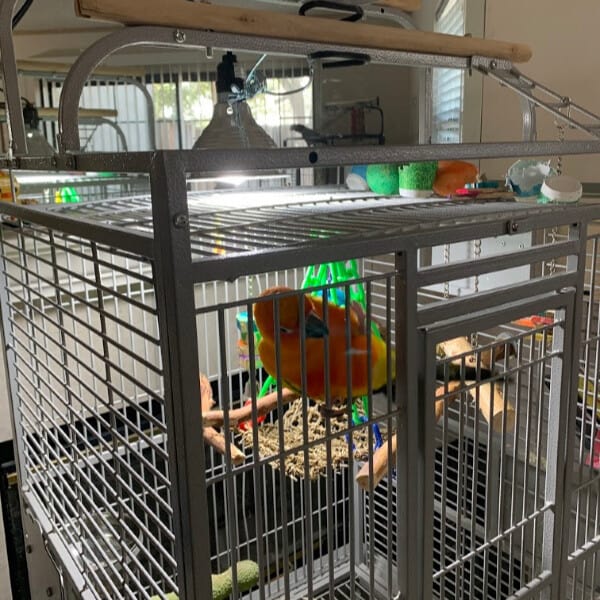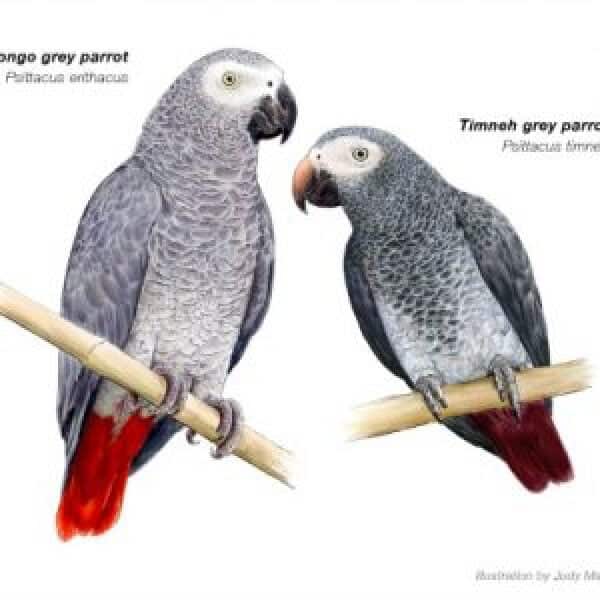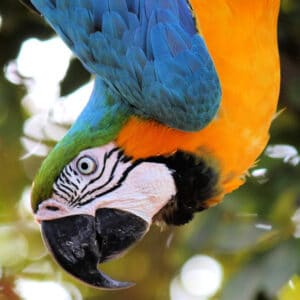
Why Does Sparky My Sun Conure Scream When He Can’t See Me?
Last Updated on by Mitch Rezman
from “comments” in a recent order confirmation email,
he is less than a year old and screams loudly when he cannot see me. I am hoping the calm herb will be effective when my neighbors are home. 🙂
Or just gives me a break when I need it. I took him to my mom’s for Christmas and she was not happy about the loudness. 🙁
desta b
Hi Desta
I’ve got a couple of ideas but need a bit more info like what kind of bird? How do we know it’s a he? Flighted or clipped? Did mom yell “shut up” at the bird?
could you send a pic of the bird in it’s cage?
thanx mitchrendear
Clipped – so that he can only fly down.
Hey mitch,
I will work on the picture.
But he has lots of toys and below is a picture of the cage I purchased.
I had him a small travel version at my mom’s.
She thought I had too many toys.
Is that possible?
I have seen other pictures of cages with toys – and I do not think I am overcrowding him.
He has interest in each corner at various levels.
In the travel cage he had three small toys and a cuddle blanket.
His primary cage can be a about six or so – depending on the size of the toys.
I have purchased different size toys from small thru large to figure out where his interests are.
So far his favorite is shiny or glittery. And nothing seems to intimidate him for long.
Sparky is a young male sun conure that hatched April 2015. The breeder told me that his parents would not feed their young, so he was hand fed from the very beginning. Part of the purchase price is that they test to see if the young bird is male or female.
I think the problem is that he is right next/across to/from me when I am watching the TV or working on my laptop. He has gotten so use to me giving him 100% attention (or the appearance of that) – so that when I am not noticeably paying attention and/or I leave the room – he is calling out to me.
I think I created the problem, since it did not start out this way.
If he was a dog I would call it separation anxiety. I try to ignore him when he does it – but it is hard to avoid him when it is a one bedroom apartment.
Unfortunately, I think anytime I come back in his line of sight – or he just hears me – he thinks his calling (i.e. screeching) has worked.
I do reward him with a treat or attention when I come back and he did not call out.
Since it is just me, I wanted him in the same room (caged or not that) I spend most of the time in when I am not at work.
Sometimes, once he starts – it is like he gets on a roll – and I cannot even talk to him in a whisper (when he gets quitter) – without him getting excited and screeching again.
The only way I seem to break the pattern is covering him up briefly.
But sometimes that does not even work – because then he starts again before I even get him completely uncovered.
The few times he screeched when I was holding him – I said ouch ( – because it is quite loud and directly in my ear) – he would stop.
I am thinking maybe acting like he is hurting me – he might stop even if in cage.
Seems to be the age old problem – when is not enough attention the problem vs. too much attention the cause.
FYI. I had rescued a African grey (that passed away a few years ago) from someone that had it caged in their garage.
She use to scream and then yell shut up.
LOL? I asked the lady about it and she said that was her yelling at it to be quiet.
Over time, the African grey quit yelling.
I think the quiet atmosphere of my home eventually calmed her down.
I am thinking that my sun conure’s youth and natural instinct is prevailing right now and that it will take some time for him to realize that he gets more attention when he is not breaking any piercing decimal screeching for my attention.

I wanted to try the product – not as a lifelong solution – but as a tool that can be used when necessary until he learns not to screech to get what he wants.
I did not get the feather enhancer to mix with it, because so far he does not like corn.
I just got the package today, so if he is feisty when I get home tonight I will try some of the calm stuff tonight.
Any thoughts or direction would be wonderful and very much appreciated.
Thanks.
So here’s the deal, Desta,
Your issues beg many more questions.
If you were holding him near your ear and he started screeching you can try something called an “earthquake” – Change the angle of your hand rapidly putting him off balance silencing him for a moment.
If he is on your shoulder screeching he should be removed and put back in the cage as he is not earned “shoulder privileges”
but let’s back up
I’m going to guess what Desta is talking about
Far too often we look at the screening problem from a“how do we stop?” Approach
For the un-indoctrinated – Conures are N-O-I-S-E-Y. Some “experts” Will tell you that some conures are quieter than others. Conures are N-O-I-S-E-Y – Get over it, they’re birds!
Much like doctors – the experts – have yet to find a cure for the common cold – us – the experts on caged bird keep trying to find the cure for screaming (and feather plucking)
My approach will be to help you deal with it at the bird’s level so at some point you can find common ground – with Sparky.
which means Sparky, the Sun CONURE is entitled to a certain amount of SCREAM TIME.
The two of you need to agree upon when and for how long.
In spite of the fact that I give several of the voices in my head kudos for their opinions (on occasion – they bicker a lot) I’m putting this question in front of some other experts – a round table of caged bird keeping experts if you will.
We want to look at this problem holistically as possible (remember that’s not healthy bird food 🙂
Until then I’m going to propose something radical and I don’t even know if it’ll work myself, but trying new things is always fun, isn’t it?
My thinking is as follows.
A bird who can’t fly because the wings are clipped is more likely to bite.
It’s simple – birds are prey animals with the best defense being flight.
If the bird is approached in any sort of menacing way they would prefer to fly away but if they can’t in many cases they will lash out – and bite.
I’ll give you an idea of how to silence Sparky when you’re out of line of sight but In advance of our responses
a) what would be wrong with Sparky flying to your shoulder going to where you are (the bedroom, Kitchen or bathroom)
Or flying to one of those rooms, landing on designated landing areas awaiting your arrival?
Oh wait I forgot why people Chop off one of the most essential parts of a bird’s anatomy – their wings
(The word “clip” just doesn’t do it justice). So I ask the gentlemen in our shop not too long ago why their Quaker was “clipped”
“He flew into a mirror” – sigh – It gets better – then he cut himself flying on the corner of our “GLASS” table.
Me thinking about the last statement (above)
Let’s take a time trip back to 1957 I was 5.
The Passover Seder had ended – the women were cleaning – the men were playing cards and talking.
No one noticed me putting on my uncle Morry’s size 10 wingtips and attempting to walk.
It sounds like the perfect setup for featured America’s Funniest Videos.
Not surprisingly after taking two steps, I fell forward with my face crashing into the corner of the glass table in grandma Dot’s living room.
Dr. Mike my pediatrician literally lived across the street and was sent for immediately.
The women cleared the dining room table and Dr. Mike explained that I was very fortunate to have missed my eye, the cut was a mere half an inch below it, was a bleeder and I would require two stitches.
As he was preparing to suture me, he explained to the now silent group that the two stitches would be less painful than several pokes of needle used to administer local anesthesia (needles were thicker back then).
Which is how I end up with a very small almost invisible scar below my right eye.
The moral of the story is, glass tables with sharp corners don’t belong in the same homes with small children and any pet with fur or feathers.
Dogs may chew furniture in a home.
We can stop that by keeping them in a crate when they’re not under supervision while providing them with training and physical/environmental options that will help them avoid this behavior.
Birds may chew furniture and fly into mirrors.
We can stop that by keeping them in a cage when they’re not under supervision while providing them with training and physical/environmental options that will help them avoid this behavior.
This leads me to ask this question “rhetorically” because I don’t have a definitive answer only a theory.
Because Sparky is “Clipped – so that he can only fly down”.
He knows he cannot easily follow you which may be frustrating.
A fully flighted bird is a confident bird who knows he has the ability to follow you whether he wants to or not, which begs the question is Sparky screaming out of frustration?
We will explore that and the other questions next time.
As for six toys in the cage, you’re easily about 12 to 18 bird toys shy for the cage you have. The major purpose of toys in a bird’s cage is to represent the leaves of the tree they might be residing in the wild ~ we call it the canopy effect.
Bird toys provide not only foraging and enrichment opportunities but privacy for an animal that can be quite jittery in the best of circumstances.
In conclusion, much like trying to understand the internet and what women really want, “fixing” your pet bird takes trial, error, and a lot of patience.
Answered by Mitch Rezman
Approved by Catherine Tobsing
Author Profile
Latest entries
 The Traveling BirdJune 26, 2025Can You Name 5 Parrot Species That Are Living Wild in the USA?
The Traveling BirdJune 26, 2025Can You Name 5 Parrot Species That Are Living Wild in the USA? Bird BehaviorJune 26, 2025How is it Parrots Are Problem Solvers Social Animals and Even Use Tools?
Bird BehaviorJune 26, 2025How is it Parrots Are Problem Solvers Social Animals and Even Use Tools? Bird & Parrot AnatomyJune 25, 2025How a Tiny Chemical Modification Makes Parrots Nature’s Living Paintings
Bird & Parrot AnatomyJune 25, 2025How a Tiny Chemical Modification Makes Parrots Nature’s Living Paintings PigeonsJune 20, 2025How Do Parrots Thrive in Cities Outside Their Native Habitats?
PigeonsJune 20, 2025How Do Parrots Thrive in Cities Outside Their Native Habitats?


